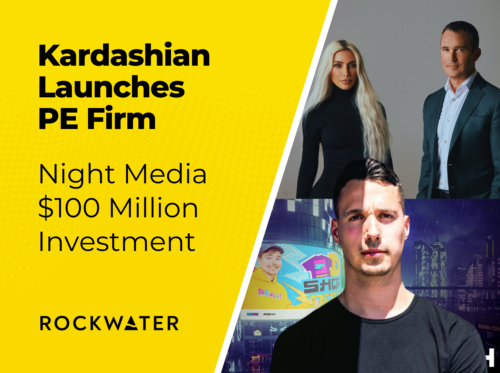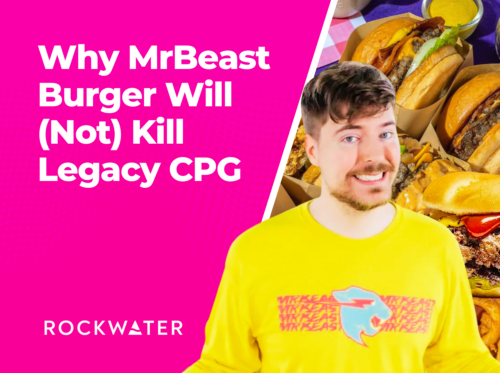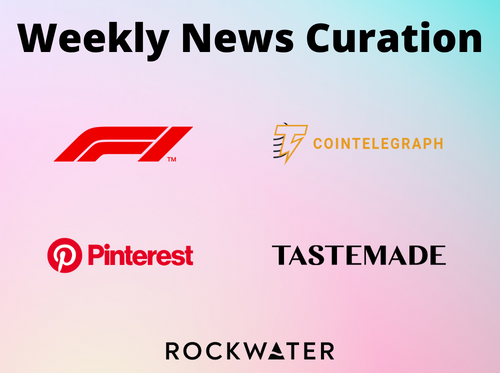SUPER and Penny AI Raise $97 Million, Prada Launches NFTs + Discord, and Streaming’s Back-to-Basics
What We’re Reading
3 articles + RockWater analysis to make you a better investor and operator.
———
Indonesian Hyperlocal Social Commerce App SUPER Gets $70M Lead by NEA & Penny AI Raises $27 Million Series B to Accelerate the Transformation of Social Commerce Enablement Platforms
TechCrunch 6.1.2022 & BusinessWire 6.1.2022
The RockWater Take by Alex Zirin
Amidst a wide-spread pull back across the private and public capital markets, two Live and Social Shopping upstarts, SUPER and Penny AI, have closed oversubscribed Series C and B sounds, respectively. As we discussed last week, these investments come on the heels of rounds closed by Firework and buywith.
At first glance, I wrote these headlines off as carryover investments from an era of free capital and good-times — VC investments have been down in both of the last two months, and are more than 20% below where they were at this time last year.
While the term sheets that made up these two deals were potentially drafted and negotiated in frothier times, there are aspects of the live and social selling business that make for an interesting investment case in our new normal (or ‘return to normal’, if that’s how you choose to look at it).
As prices continue to rise, money becomes more expensive to borrow, disposable income dwindles, meaning there is no doubt that consumer spending will decrease over the next 6-12 months. Layoffs and impending loan payments will force customers to make purchase decisions more carefully.
Based on that logic, platforms that facilitate better-informed product discovery and shopping will be well suited to convert customer spending intent to purchase. As gratuitous spending decisions become more scarce, endorsements from product experts, prominent creators, or friends will help consumers feel more secure in their decision making — not to mention all of the other factors like urgency and personal connection, that drive higher conversion rates in live selling environments.
Therefore, even as we enter times of less economic certainty, I think that investor excitement in the live and social selling sector is well justified.
Readers, how do you think livestream shopping will hold up in the new economy?
———
Prada Becomes the Latest Fashion Brand to Launch NFTs
The Block, 5.31.22
The RockWater Take by Michael Booth
This week Prada Group launched their first NFT collection and it sold out within minutes. It was also accompanied by the launch of a Prada Discord group.
This marks the 2nd Discord group launched by a luxury fashion house. Gucci was the first to pull the trigger last fall.
Discord groups are table stakes for building sustainable Web3 products, but surprisingly most consumer brands neglect it all together, or simply don’t have a defined strategy.
Discord’s install base has 150 million MAUs and 20 million active weekly servers…. that’s a huge addressable market for an alternative marketing channel!
Moreover, Discord’s communities are tight knit and sticky – great characteristics for product marketing.
Successful Brands Launch Case Studies:
> Adidas launched their Discord server in partnership with crypto influencer G Money for their BAYC NFT drop (55k active members)
> Gucci launched a Discord for their Gucci Vault NFT drop (65k active members)
Two quotes from execs that highlight Discord’s importance for brands:
“When brands say they want to enter into Web3 or launch an NFT and they don’t have Discord even up, that pretty much goes against what Web3 stands for, which is community. Different brands will try to get into the NFT space but probably a majority will fail because they don’t have the community behind it. They will approach it as if it’s a normal marketing strategy or use it as a PR stunt. And you might get one hit on that. But, long-term, if you aren’t home-grown and you don’t have the community behind you, it will be really challenging for a lot of the big brands.”
“It’s important for brands to know and understand their purpose for being on [Discord], building a community is very different from running a campaign — your community isn’t only your audience; it’s an evergreen space where fans, customers and users can come together around shared interests.”
Key Takeaways for Brand Execs / IP Owners:
1. If you’re going to launch an NFT, you better have a Discord strategy. It’s an invaluable channel for building the grassroots community that will both amplify your product launch + build a sticky long-term community. Harness it to make an initial splash and retain your relevancy long term.
2. Be prepared to incentivize your community’s first movers and valuable contributors with unique rewards, like early access to collections at discounted prices. The most successful Discords function like a meritocracy, the more value an individual contributes (moderating content, inviting others, starting discussions, etc) the more rewards that individual receives. Don’t be scared to give away too much of your upside to the community, Web3 is a positive sum game and community it what powers your enterprise value!
3. Establish credibility by partnering with Web3 influencers that have street cred and will get your Discord server off the ground. Adidas partnering with BAYC and influencer G Money bought them a ton of credibility, with the community at large. As did Nike, by buying RTFKT studios. Find influencers who can be long term partners and fit authentically with your brand identity.
———
Warner Bros. Discovery & An Interview with Michael Nathanson About Streaming and Digital Advertising
Stratechery, 5.23.2022 & Stratechery 6.2.22
The RockWater Take by Chris Erwin
For the 2022 streaming economy, I really dig the “back-to-basics” and unit economic focus of analysts like Michael Nathanson and CEO’s like David Zaslav. 3 key insights…
(1) In a Stratechery interview w/ Michael Nathanson, famed TMT research analyst, he discussed how content costs at scaled streamers are variable, and not fixed.
Specifically, expanding to int’l markets and acquiring marginal, non-core customers requires custom content spend, not just “localization” of a few big hits. And getting it right ain’t easy. Originals are not a guaranteed success, and until you figure it out, churn is very high.
Multiply that by 200+ int’l markets for Netflix and that’s a big investment.
A contrarian, though I believe to be right, POV to recent analysis over past few years. Including potentially some of ours…
(2) The re-interest in AVOD by streamers. The data coming out of Discovery Inc shows that the rightly priced ad-heavy, ad-lite, and ad-free tiers drives higher ARPU across the entire subscription business, which includes the benefit of reduced churn, the #1 issue facing the modern streaming wars landscape.
(3) Cable is still a strong biz model, particularly for news and sports. While linear viewership has been going down for 2 decades, and linear subs fell 4% for Warner Bros. Discovery last quarter, CPMs are still going up. As CEO David Zaslav says, “the advertisers are still paying more than the hurdle rate of decline.”
Again, I’m a big fan of Zaslav’s “back-to-basics” focus: (1) Create great IP with mass market appeal, (2) know your financial fundamentals to drive cash flow across all your traditional and new content models AND give customers pricing choice (3) use all consumer touchpoints to promote all your products.
———
If these insights are relevant to projects you are thinking through, ping us here. We’re always excited to riff through ideas!



